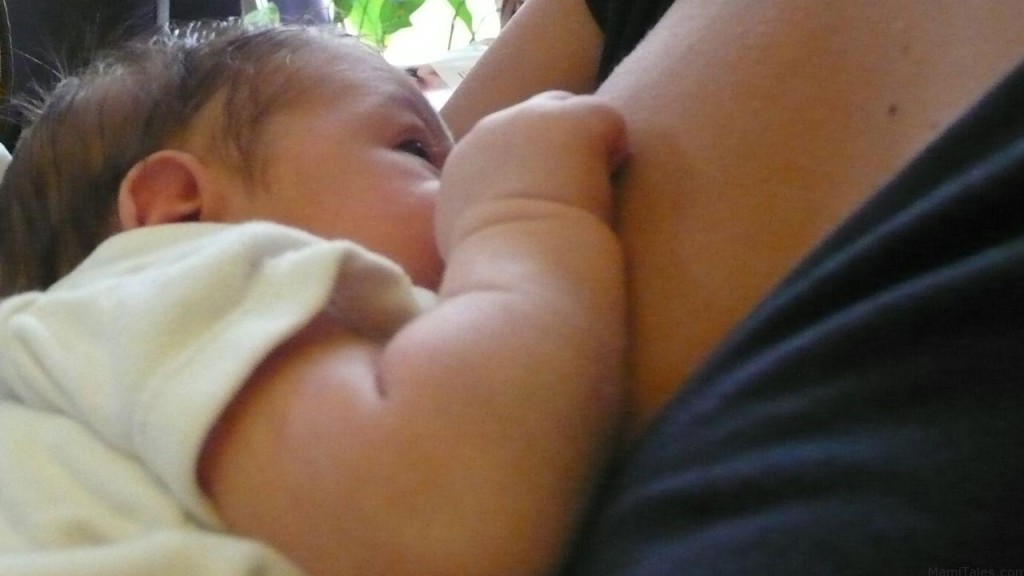Deprecated: Function create_function() is deprecated in /home/erikzcbg/public_html/mamitales.com/wp-content/plugins/related-posts-by-zemanta/init.php on line 183
Deprecated: Function create_function() is deprecated in /home/erikzcbg/public_html/mamitales.com/wp-content/plugins/related-posts-by-zemanta/init.php on line 183
 Many moms are often afraid about not being able to breastfeed, or have trouble keeping their milk supply up for their babies. I dealt with exactly the opposite problem: milk oversupply, which means that I had too much milk! It happened first with my daughter, then again 5 years later with my son. My body is too enthusiastic about feeding my little ones, so it goes in over-drive and the result is a large production of milk that literally gushes out at the slightest provocation.
Many moms are often afraid about not being able to breastfeed, or have trouble keeping their milk supply up for their babies. I dealt with exactly the opposite problem: milk oversupply, which means that I had too much milk! It happened first with my daughter, then again 5 years later with my son. My body is too enthusiastic about feeding my little ones, so it goes in over-drive and the result is a large production of milk that literally gushes out at the slightest provocation.
Many would think milk oversupply is a “good problem,” but the truth is that it brings a lot of issues for both mom and baby. As the milk sprays out as it lets-down, the baby ends up gulping and spluttering trying to deal and catch up with the flow (or actually, gush). That makes it difficult for the baby to latch, as s/he ends up in a shallow latch to be able to handle the milk flow. That translates into sore nipples. VERY sore nipples. For at least a month with my son I dealt with cracked, bleeding nipples, and at some point even mastitis because of an infected plugged duct. The forceful let-down also causes baby clamp his/her jaws to reduce the milk flow, which hurts pretty bad; they might not have teeth yet, but their jaws are powerful. With the gulping of the milk the latch never gets a good seal, so the baby ends up swallowing a ton of air — which turns into gas cramps and lots of spit up. And to end it all, baby cannot be comfort-nursed, so there is no way to keep him/her happy without a pacifier (the use of which it is not recommended for babies younger than 1 month, to prevent nipple confusion).
Babies of over-producing mothers tend to grow a lot quicker, but that is if they don’t get a fore-milk hind-milk imbalance. Foremilk is the lower-fat milk baby gets at the beginning of the feeding. It’s sweeter and more diluted. Hindmilk is the fat-rich milk towards the end of the feeding. If a baby is receiving more foremilk than hindmilk, their stools tend to be greenish, frothy and explosive, and sometimes chemically or foul smelling. There needs to be a balance between fore and hindmilk, or the baby won’t get enough nourishment and calories. With milk oversupply sometimes baby gets too full with the foremilk and never gets to the hindmilk — this is particularly true if you try to feed the baby on both breasts each feeding, as most women usually do. My son was gaining weight well, but his spit up and gas were making him miserable, so I went to the Lactation consultant at Kaiser, and read all the info I could at La Leche League and Kelly mom (two fabulous internet resources for breastfeeding and baby issues — Kelly mom is what Kaiser actually uses as handouts to deal with breastfeeding issues). Here are 7 steps I used to deal with my milk oversupply:
1 – BLOCK FEEDING
I only fed my baby on one breast each feeding. If he was hungry again before 3 hours had passed, I’d feed him again on the same side, until my breast was completely empty. Once 3 hours had gone by from the 1st time I fed on that side, I’d then feed on the other side for the next 3 hours. I used a plastic breastfeeding band on my wrist to keep track of the hour and breast I had been using. As time went by my milk production adjusted to my baby’s needs, so I didn’t have to do this for more than a month.
2 – NURSING RECLINED, IN AN UPRIGHT POSITION
This one was hard, as there are very few resources I found to see what the right position was. Pretty much you recline yourself back, prop your arm in pillows and have the baby’s head higher that his stomach. This upright position is also good for baby’s with GER or GERD. This helps up a lot with the spit up and reflux. The laying back is so that the flow of the milk is not as strong. You can also breastfeed laying down on your side, so that baby can let go of the nipple if the flow is too strong — I didn’t do this too much as you can sometimes end up with a puddle of milk, and it’s really a drag having to change your linens in the middle of the night. Now, at 8 months, I still nurse upright and reclined, but it’s just because that’s what baby and me are used to. For this position the Boppy pillow works (specially to help you prop the baby up), but the breastfriend pillow doesn’t.
3 – LET THE MILK SPRAY ONTO A CLOTH WHEN IT LETS DOWN
When feeding my son, I’d wait until I felt the milk coming down, then I would carefully separate him from my breast and let the first gush of milk spray on a burpie, until it slowed down enough to reattach him. It did help a lot with the latch, and also with the gas… but if he was super hungry, there was nothing I could do unless he let go of the nipple himself…
4 – BURP BABY IN THE MIDDLE OF THE NURSING SESSION
This helps a lot with the gas of the first gulping of milk, as well as with spit up. My son’s pediatrician also recommended using gas relief drops, which helped a lot. If you can’t detach baby from the breast in the middle of the session, at least try to burp him twice at the end. The positions that worked best for burping for me were over my shoulder, patting baby’s back, or sitting him on my lap with his back to my stomach and my hands on his tummy.
5 – EXPRESS AN OUNCE OR TWO OF MILK BEFORE FEEDING
This is only if you’re very uncomfortable and feel very full — and try to do this as little as possible. Using a manual pump, express a bit of milk to soften your breast and slow down the milk flow. DO NOT KEEP THIS MILK! It is all foremilk and it’s not good for feeding baby. Just pump and dump.
6 – DON’T PUMP, UNLESS YOU’RE GIVING BOTTLES TO YOUR BABY
If you work or have someone else feed your baby, do pump and make sure you empty your breast. With my first baby I was working, so I did pump… the exact amount that she had drank from the bottle the day before. Empty your breast, and make sure you mix the milk so that each bottle has the same amount of fore and hind milk. Breastfeeding is a demand-supply balance, and you’re trying to get your body to adjust to the actual demand of your baby… so, over-pumping just promotes your body to keep producing more.
7 – TRY TO FEED BABY MORE OFTEN
If I fed my son every 2-3 hours, the breasts would not be as full and he could latch on better. The worst feeding was always the first one in the morning, as the night hours without feeding usually left me with very full breasts. But by feeding more often both the milk ejection and the milk production were tamed down considerably. I also always made sure to offer the breast at the first signs of hunger… if I waited too long to feed him he would suck too hard, then the milk would come down too strongly and everything would spiral down from there.
Related Posts










Great tips- thank you for sharing!
Great post! Still nursing my toddler and I am sad that it is almost over.
Thanks! And nursing is a really great thing to do for our babies. Hope you didn’t have to deal with oversupply, though!